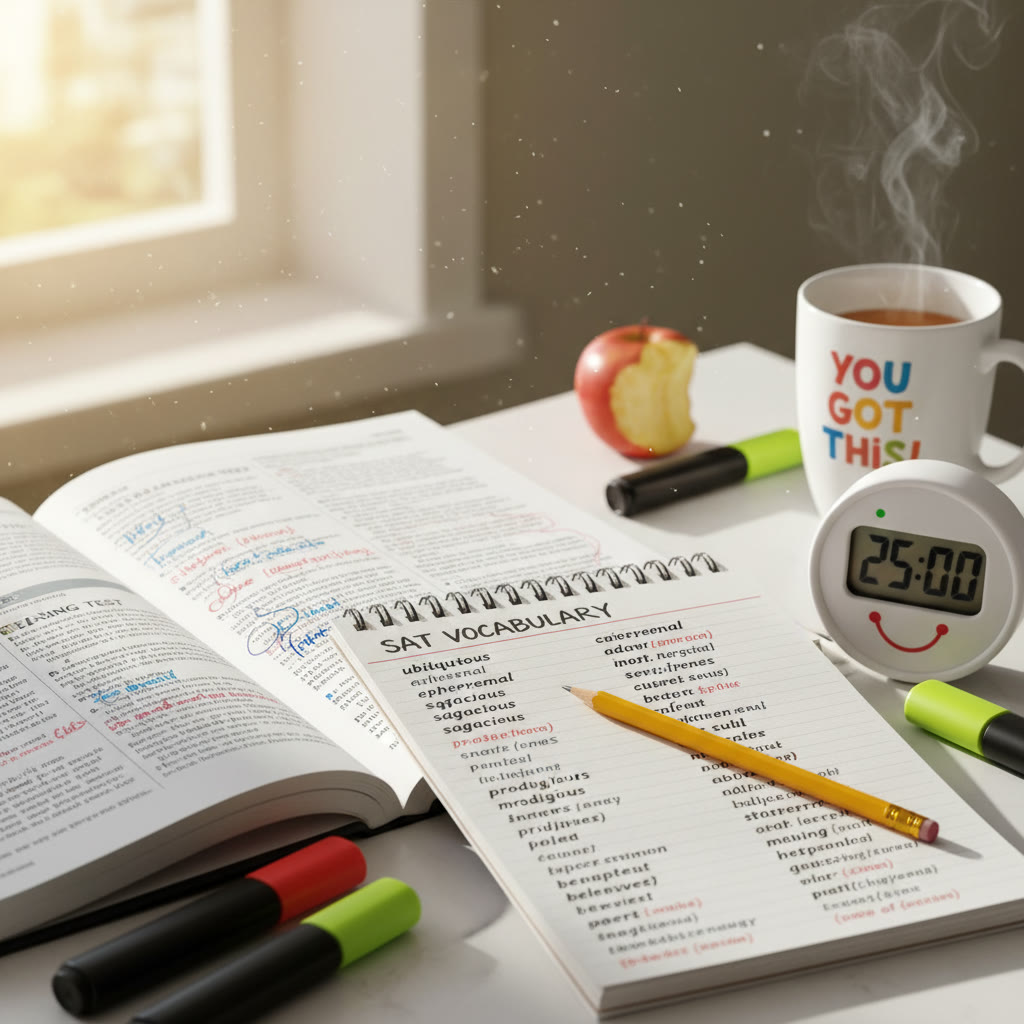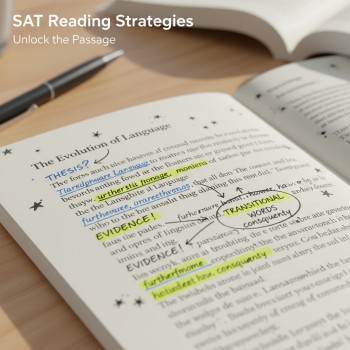Why Students Who Read Newspapers Score Better on the SAT
There is something quietly powerful about a folded newspaper on a breakfast table. For many students it looks like an old-fashioned habit, warm with ink and slower in pace than a newsfeed. But that slowness is exactly the point. Reading newspapers regularly builds a set of skills that map almost perfectly onto what the SAT tests: vocabulary in context, focused reading, analyzing arguments, synthesizing information across passages, and stamina. In this post we will explore why newspapers help, show practical ways to use them for SAT prep, compare newspaper reading to other habits, and suggest a study plan you can adapt. I will also note how Sparkl’s personalized tutoring can fit naturally into that plan, offering 1-on-1 guidance, tailored study plans, expert tutors, and AI-driven insights when you want a more structured boost.
The anatomy of the SAT that aligns with newspapers
Start by remembering what the SAT asks you to do. In the Evidence-Based Reading and Writing section you read dense passages, understand arguments, find evidence, determine meaning from context, and improve grammar and style. Those are the very muscles you exercise when reading newspapers: parsing editorials, identifying main ideas, evaluating sources, and noticing tone and nuance. Newspapers present information in multiple registers, from straight reporting to opinion pieces, features, and science explainers. That variety mirrors the SAT, which mixes literature, historical documents, and scientific passages.
Key SAT skills you can practice with newspapers
- Vocabulary in context: seeing new words used naturally, not just memorized lists.
- Inference and main idea: identifying what the passage implies rather than what it states directly.
- Author purpose and tone: distinguishing fact reporting from persuasion and tone.
- Evidence-based reasoning: linking questions to precise lines or paragraphs.
- Syntax and grammar intuition: noticing sentence structure and knowing why a comma or clause matters.
- Reading endurance: building the concentration needed for long test sections.
Why newspaper reading beats passive scrolling
There is a difference between exposure and engagement. Scrolling a feed gives you snippets, headlines, and emotional hooks. Newspapers ask you to linger. That lingering matters because comprehension is not a single skill: it is sustained attention plus active processing. When you read a well-edited article you tend to slow down, notice transitions, and absorb context clues. That slower processing pushes vocabulary from passive recognition to active understanding, which is the level you need for SAT questions that ask how a word contributes to tone or meaning.
An example: two ways to learn a word
Imagine encountering the word ‘ubiquitous’ on a feed versus in an op-ed. A feed might show a headline: Ubiquitous tech trends. You see the word; you might guess the meaning. In a newspaper feature, you might read: ‘Smartphones have become ubiquitous, present in cafes, classrooms, and commuter trains alike.’ That sentence gives context, examples, and usage clues. Later in an SAT passage, a question could ask: what does ubiquitous most nearly mean as used in line 12? The richer context from the newspaper reading trains you to answer confidently.
How different sections of a newspaper map to SAT passage types
Not all newspaper reading is equal for SAT prep — but variety is a strength. Choose articles from several sections over time to mirror the range of SAT passages.
- News reporting: short, factual, good for practice finding main ideas and supporting details.
- Editorials and opinion: excellent for understanding argument structure, evidence usage, and tone shifts.
- Features and human interest: narrative flow, chronology, and inference practice.
- Science and business: denser vocabulary and technical phrasing, similar to SAT science-focused passages.
- Letters and reviews: compact arguments and concentrated tone clues.
Practical comparison
If you spend a week reading one feature, one editorial, and one science article, you mimic the SAT mix better than if you always read only sports blurbs or celebrity pieces. Rotating sections trains your brain to change registers — a skill that saves time on test day because you learn how to approach a humanities passage differently from a scientific one.
Active reading habits that translate directly to higher scores
Newspaper reading becomes a high-value SAT activity when it is active rather than passive. Here are practical habits you can practice in short daily sessions.
- Annotate: underline main claims, circle unfamiliar words, and jot a one-sentence summary in the margin. Active annotation equals better retention.
- Summarize aloud: after reading a piece, explain it in two minutes to a family member or yourself. Teaching solidifies comprehension.
- Ask SAT-style questions: what is the author trying to prove? Which line best supports the claim? What is the tone? This trains your question-spotting muscles.
- Time yourself: many students mismanage time on the test. Practice reading and answering three to four paragraph questions within a timed window to build pacing.
- Create a vocabulary log: list words you find, write a sentence of your own, and review weekly. Active use cements meaning.
Sample daily routine
Spend 25 to 45 minutes per day: 15 minutes reading and annotating one long article, 10 minutes summarizing and making a short vocabulary list, and 5 to 10 minutes answering two or three practice questions related to the piece. Over four weeks, this routine will build both knowledge and test instincts.
Real-world context builds background knowledge for passages
Many SAT passages assume a baseline of historical, cultural, or scientific knowledge. Regularly reading reputable newspapers gives you an informal background library: familiarity with historical events, common scientific debates, and cultural references. That background reduces the cognitive load during the test because you spend less time decoding unfamiliar context and more time answering the question. In short, newspapers help you bring a richer toolkit to each passage.
Example of background knowledge in action
Consider a passage about urban planning. A student who has read a few in-depth articles about city infrastructure will recognize common terms and themes, like gentrification or transit-oriented development, and can focus on argument and evidence rather than struggling to interpret new terminology. That advantage can shave precious seconds off each question.
Measuring progress: a practical table
Below is an illustrative table that links reading frequency to the development of skills important for the SAT. This is not a scientific study but an evidence-guided snapshot you can use to set realistic goals.
| Reading Frequency | Weekly Time | Likely Skill Gains | Practical Goal |
|---|---|---|---|
| None or rare | < 30 minutes | Limited vocabulary exposure, low stamina | Begin with 2 articles per week |
| Occasional | 30–90 minutes | Noticeable vocabulary growth, improved main idea identification | Aim for 3–4 pieces per week with annotations |
| Regular | 2–5 hours | Stronger inference skills, better pacing, broader background knowledge | Daily 20–30 minute sessions with active practice |
| Intensive | 5+ hours | High vocab proficiency, refined critical reading, test-like stamina | Combine newspaper work with official practice tests |
Quality over quantity: what to read and why
Not every newspaper article is created equal for SAT preparation. Prioritize pieces that are well-edited, contain analytical argumentation, and introduce new vocabulary in context. Longform features push focus and inference; editorials sharpen your ability to evaluate evidence. Even good local reporting can be helpful when it explains causes and consequences rather than just reporting events.
Avoid these traps
- Clickbait summaries that strip nuance. They train quick reactions, not deep reading.
- Heavy reliance on headlines. Headlines are hooks, not full context.
- Echo chambers that repeat the same sources. Diverse viewpoints widen your comprehension toolkit.
Integrating newspapers into an SAT study plan
Newspaper reading should complement your practice tests and targeted lessons. Use it for daily warm-ups, vocabulary building, and argument analysis. Pair an editorial with a timed practice set: annotate the piece, list the main claim and evidence, and then answer a few SAT-style questions. Over time you will notice two benefits: faster comprehension of complicated passages and more precise evidence selection.
Sample four-week plan
- Week 1: Read three long articles across different sections. Annotate and summarize each. Make a modest vocabulary list.
- Week 2: Add timed practice questions after each article. Start pairing one article with an SAT passage of similar topic.
- Week 3: Increase reading to daily short sessions. Practice identifying author tone and question stems quickly.
- Week 4: Take a full reading section practice test. Use newspaper strategies to attack passages and compare timing and accuracy.
How Sparkl’s personalized tutoring can enhance newspaper-based practice
Reading newspapers is powerful, but a few targeted interventions accelerate progress. That is where Sparkl’s personalized tutoring can slot in perfectly. A 1-on-1 tutor can help you pick the right articles, model active annotation, and design a tailored study plan that fits your strengths and weaknesses. Expert tutors can also turn an article into test-like exercises and use AI-driven insights to track vocabulary retention and timing improvements. If you prefer structured feedback, Sparkl’s approach gives you the human guidance you need while preserving the independent reading habit that builds long-term skill.
Common questions and practical answers
Will reading newspapers replace practice tests?
No. Newspapers build complementary skills: vocabulary, stamina, and argument analysis. Practice tests train you in format familiarity, pacing, and question types. Do both: use newspapers to sharpen the mind and practice tests to sharpen the method.
How long until I see results?
Expect incremental gains. Within two to four weeks you will notice improved comprehension and a faster read. Measurable score changes depend on how you combine newspaper work with targeted practice. Students who pair daily reading with focused practice tend to see the most reliable improvements.
Can digital newspaper apps work as well as print?
Yes. The medium matters less than the method. Digital readers have the advantage of search and archive access, while print can reduce distraction. The key is concentrated, annotated reading—whether you use a tablet or newsprint.
Practical exercises to start this week
- Pick one long article and write a one-paragraph summary without looking back at the text. Then compare and identify three missing elements.
- Choose an editorial and list the claim, two pieces of supporting evidence, and one counterargument the author addresses or ignores.
- Create a mini-vocabulary quiz for yourself: pick five unfamiliar words, write your best guess for each, then test yourself a day later with new sentences.
- Time a 20-minute reading and answer three SAT-style multiple choice questions you devise from the passage.
Closing thoughts: reading as long-term investment
Newspaper reading is not a quick hack; it is a sustainable habit that yields compound returns. It does more than prepare you for a single test: it strengthens critical thinking, cultural literacy, and the kind of clarity that serves you in college and beyond. If you make even small daily investments—annotating, summarizing, and asking questions—you will notice the SAT becoming less of a puzzle and more of a skill demonstration.
If you ever want to speed up the process, combine your reading habit with expert support. Sparkl’s personalized tutoring offers tailored study plans, 1-on-1 guidance, expert tutors, and AI-driven insights to help translate newspaper practice into measurable test improvements. The habit gets you far; thoughtful coaching can take you further, faster.


Final checklist to get started
- Choose three sections to read each week: news, opinion, and science or features.
- Annotate one article per day and summarize it in a sentence.
- Keep a running vocabulary log and review weekly.
- Pair newspaper reading with timed SAT practice once a week.
- Consider occasional 1-on-1 sessions to refine strategy and track progress.
Start small, stay consistent, and let daily reading do the quiet work of building a sharper, faster, and more confident SAT reader. Good luck, and enjoy the journey: the test is a milestone, but the skills you build last a lifetime.



















No Comments
Leave a comment Cancel